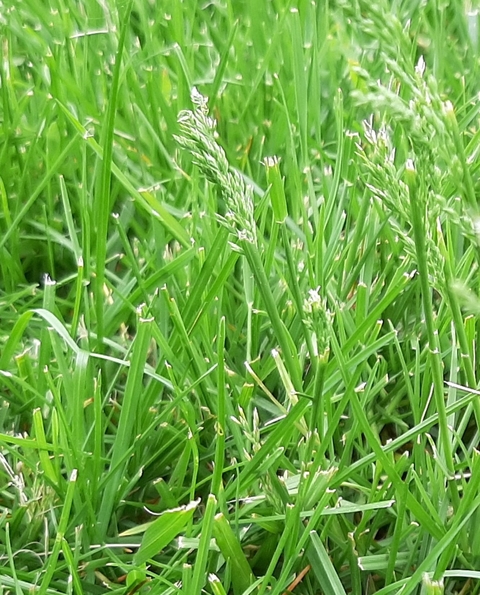Last summer we had less than half the average rainfall between Memorial and Labor days. Now that our yards have greened up, are you noticing patches of dead grass in your lawn, left behind by last year’s drought?
Early June is a great time to focus on getting the lawn thicker and healthier. Let’s make some repairs, upgrade our lawn management practices and be ready for whatever this summer brings.
Recover
- Weeds love bare spots. If the open spots are 6 inches or less, grass typically fills in on its own, though fine fescues may be a little slower.
- Fertilize by mid-June to thicken the grass, shade weeds, and add nutrients for roots and shoots. Apply 1/3 of your total nitrogen treatment for the year, using a fertilizer with a grade as close to 24-0-12 as you can find or according to your soil test results.
- Find more information on the Fertilizing lawns page.
Restore
- If the open spots are larger than 6 inches, remove weeds by hand and then re-seed.
- Prepare the soil by raking with a heavy garden rake or using a vertical mower and raking off most of the debris. Make sure to expose the soil.
- Add your seed by hand for small spots or with a drop spreader for larger ones.
- Lightly rake with a leaf rake for good seed-to-soil contact.
- Top dress with a new seed starter fertilizer.
- Keep the seeds moist by watering several times a day for short periods of time. After the seeds germinate, slowly decrease the amount of watering.
- At about the 9-minute mark in this video, watch the demonstration of how to overseed.
Maintain
- On established lawns, limit watering to about 1 inch of water every 10 to 14 days—this is called deficit watering. This lets your lawn go into dormancy. Watering less frequently encourages longer roots and drought tolerance.
- If drought conditions continue during dormancy, water ¼ to ½ inch every 2 to 4 weeks or anytime you see footprints when you walk across the lawn.
- Minimize playtime on the lawn when it’s dormant or when drought conditions exist. This protects the crown, where all new growth happens.
- If you have a fine fescue lawn, water after a couple of weeks into dormancy. Kentucky bluegrass should be able to survive a dormancy period of almost two months.
- Mow less frequently and raise your mower to 3 or 3 ½ inches. Mowing longer combined with deficit watering helps grassroots go deep. Take no more than a third of the blade each time you mow, leave clippings on the lawn and keep the mower blade sharp. Leaving your grass longer will also discourage crabgrass and other weeds.
- When the lawn has recovered from drought (regular watering practices have been resumed or there has been regular rainfall), spot-treat individual broadleaf weeds by identifying the weed and applying an appropriate herbicide, following label directions.
- Sign up for automatic notifications for your zip code to find out when it’s time to apply crabgrass pre-emergent, control spring broadleaf weeds, and treat for Japanese beetles on the GDD tracker site.
Right now
- Grass seed heads: This time of year, some grasses grow seedheads. Don’t worry about mowing them off. The seed is likely sterile because the plant is a hybrid.
- Fertilize: After going to seed, the lawn may need a spring fertilizer application to prepare for summer.
- Mow: Keep mowing to about a 3 ½ inch height to keep out weeds and maintain plant health.
- Learn more: Sign up for the Turfgrass Science monthly newsletter (and read previous issues) at Home Lawn Care Newsletter.
Enjoy the start of the summer!


